During this COVID time of online and digital engagement, alumni and donors are hungering for more personal contacts and interactions. At the same time, many people are tiring of virtual and other online events. How can educational institutions and nonprofits keep their supporters involved and engaged?
The CASE Alumni Engagement Metrics White Paper was published in August 2018. That study was the result of years of surveys and research about how to measure the efficacy of alumni engagement activities. The four measurement categories selected were:
- Volunteer: Speaking in classes, recruiting prospective students, serving on alumni boards or councils
- Experiential: On-campus and regional events, homecoming, reunions
- Philanthropic: Annual, planned, athletics, and campaign giving
- Communication: Social media posts and interactions, class notes submissions
COVID’s Impact on Alumni Engagement Activities
Engaging alumni as volunteers has been challenging since COVID, as in-person events and person-to-person contact were either canceled, made virtual, or drastically reduced in frequency and capacity. Experiential activities also took a hit for the same reasons.
Philanthropic engagement continued and was more focused on broad-based student support. Given the direct link between volunteerism and fundraising support, giving too was impacted by limited volunteer and experiential opportunities available.
This leaves communication, which is defined as “Interactive, meaningful communication with alumni that supports the institution’s mission, strategic goals and reputation.” Institutions that had a robust online social media presence before COVID were well-prepared to continue their online engagement.
Take a Walk in Your Volunteer’s Shoes
Theresa Davis is the Vice President for University Advancement at San Jose State University in California. At SJSU they are examining how to “push out” alumni volunteer opportunities to their graduates. Alumni can select ways to serve the university, based on their interest and the amount of time they can give. Some alumni will only have a day they can devote to a project, while others may be able to assume a longer-term commitment (such as mentoring). By effectively marketing these volunteer positions, they can increase the number of alumni engaging with the university—which may lead to increased support.
We should also be asking how we talk to, with, and about alumni. Do campus leaders share their great pride in the accomplishments of their graduates? Are students aware of the diversity of alumni occupations and how they can connect with alumni? Alumni enthusiasm can rise and fall based on the reputation of the institution, so it is important to be cognizant of how alumni perceive your brand. Every former student can serve as an ambassador by referring applicants, providing career support, serving as a guest speaker, and donating.
“It is ironic that in shutting down due to COVID, we have been able to be more inclusive.”
Adapting to the Pandemic at University of La Verne
The University of La Verne in California has nine campuses throughout the state. While their main campus in La Verne includes traditionally-aged residential students, their other campuses educate mainly non-traditional students.The university has a high percentage of first-generation students and graduates 2,000 students per year, with ceremonies in the fall and spring. When COVID derailed plans for in-person commencement ceremonies, a new planning committee was formed with representatives from across the university. Goodie boxes were mailed to graduates and a drive-through ceremony was held. The campus radio station even announced graduates’ names as they arrived on campus for the ceremony.
Assistant Vice President of Alumni Engagement Kim Grant provides her insights on engaging alumni. Virtual programs have enabled her to expand the radius of engagement beyond the borders of the university’s campuses and surrounding communities. “It is ironic that in shutting down due to COVID, we have been able to be more inclusive. “While her staff now has more expertise and less intimidation with technology, online events still require a lot of work. “TTS: Tiny Team Syndrome requires being super strategic” in choosing programs and activities that will provide meaningful connections between alumni and the university.
La Verne enjoyed a very robust Homecoming program before COVID. Since having people come to campus for a tailgate party was not possible, tailgating supplies were either sent to alumni or could be collected from campus. Homecoming “Day” morphed into Homecoming “Week” with a variety of virtual events and activities, including admissions and career services programs. Students ran a 5K around campus one morning, and alumni were invited to participate in their hometowns and use phone apps to record and report their runs.
Alumni engagement efforts refocused on career supports for their graduates, such as assessing personal skills and rebranding oneself. The alumni engagement staff partnered with colleagues in the career services office. The Alumni Board members offered “Leo Life Coaching” (La Verne’s mascot isLeo the leopard), providing meaningful connections between current students and alumni. Students also gained a deeper understanding of what their lives will be like after graduation and how the university will continue to support them.
A Creative Approach from Pitzer College
Another way to provide a through-line between alumni and students is with Senior Advice Cards. At Pitzer College in Claremont, California graduating seniors write advice cards to students who will enter the college in the fall, giving those new members of the campus community the benefit of their wisdom and experience. The advancement office hosts an on-campus party for the senior class and includes this note-writing during the festivities. The notes are copied and placed in water bottles that are presented to new students on their first day on campus. Those students are often thrilled to receive these messages of support and encouragement.
Stewardship Gift Ideas
Barbara Perry-Lorek, President of Chameleon Creative Group has worked with nonprofits and educational institutions for over 20 years, providing meaningful promotional gifts for donors and alumni. According to Ms. Perry-Lorek, the most popular items include practical gifts like wireless chargers, blankets, cheese boards, and barware. Sustainable and eco-friendly items made from recycled materials and bamboo are also in high demand.
And while it may seem quaint, handwritten notes are making a comeback. Thank you notes from student scholarship winners, faculty grant recipients, or grateful patients could have a profound impact on donors. For those working in colleges and universities, consider signed books by faculty authors, which include a personalized note. The gift of a book also ties alumni back to the educational mission of their alma mater and inspires lifelong learning.
Reimagining Alumni Engagement
We need to continue to reimagine the engagement and stewardship work that has been successful in the past. While we may hunger for the return to in-person reunions and fundraising galas, the fact remains that those activities have never been attractive to some of our constituents. Online events enable people to participate from the comfort and safety of their homes. The challenge continues to be how to make those remote participants feel that they are still valued members of the organization, even if they cannot be physically present.
Nancy Treser Osgood is a senior consultant at The Phoenix Philanthropy Group. She has a Master of Arts in Religious Education from the Claremont School of Theology and a Bachelor of Arts in English from Pomona College.Nancy is also a recipient of the prestigious CASE District VII Tribute Award for the highest standards of professional achievement and outstanding mentorship.
